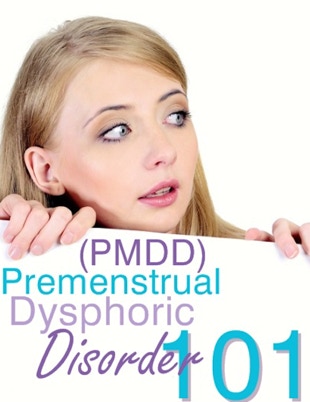

Doctors
Institutions
Conditions
Drugs
Insurances
TCM
Research
About Us
Contact Us
What is premenstrual dysphoric disorder (PMDD)?
Premenstrual dysphoric disorder (PMDD) is a much more severe form of premenstrual syndrome (PMS). It may affect women of childbearing age. It’s a severe and chronic medical condition that needs attention and treatment. Lifestyle changes and sometimes medicines can help manage symptoms.
What causes PMDD?
The exact cause of PMDD is not known. It may be an abnormal reaction to normal hormone changes that happen with each menstrual cycle. The hormone changes can cause a serotonin deficiency. Serotonin is a substance found naturally in the brain and intestines that narrows blood vessels and can affect mood and cause physical symptoms.
What are the risk factors for PMDD?
While any woman can develop PMDD, the following may be at an increased risk:
Women with a family history of PMS or PMDD
Women with a personal or family history of depression, postpartum depression, or other mood disorders
Other possible risk factors include lower education and cigarette smoking
Talk with your healthcare provider for more information.
What are the symptoms of PMDD?
Symptoms of PMDD appear during the week before menstruation and end within a few days after your period starts. These symptoms disrupt daily living tasks. Symptoms of PMDD are so severe that women have trouble functioning at home, at work, and in relationships during this time. This is markedly different than other times during the month.
The following are the most common symptoms of PMDD:
Psychological symptoms
Irritability
Nervousness
Lack of control
Agitation
Anger
Insomnia
Difficulty in concentrating
Depression
Severe fatigue
Anxiety
Confusion
Forgetfulness
Poor self-image
Paranoia
Emotional sensitivity
Crying spells
Moodiness
Trouble sleeping
Fluid retention
Swelling of the ankles, hands, and feet
Periodic weight gain
Diminished urine output
Breast fullness and pain
Respiratory problems
Allergies
Infections
Eye complaints
Vision changes
Eye infection
·
Gastrointestinal symptoms
Abdominal cramps
Bloating
Constipation
Nausea
Vomiting
Pelvic heaviness or pressure
Backache
Skin problems
Acne
Skin inflammation with itching
Aggravation of other skin disorders, including cold sores
Neurologic and vascular symptoms
Headache
Dizziness
Fainting
Numbness, prickling, tingling, or heightened sensitivity of arms and/or legs
Easy bruising
Heart palpitations
Muscle spasms
Other
Decreased coordination
Painful menstruation
Diminished sex drive
Appetite changes
Food cravings
Hot flashes
·
The symptoms of PMDD may look like other conditions or medical problems, such as a thyroid condition, depression, or an anxiety disorder. Always talk with a healthcare provider for a diagnosis.
How is PMDD diagnosed?
Aside from a complete medical history and physical and pelvic exam, there are very few diagnostic tests. Because there are mental health symptoms, your healthcare provider may want you to be evaluated for mental health concerns. In addition, your healthcare provider may ask that you keep a journal or diary of your symptoms for several months. In general, to diagnose PMDD the following symptoms must be present:
Over the course of a year, during most menstrual cycles, 5 or more of the following symptoms must be present:
Depressed mood
Anger or irritability
Trouble concentrating
Lack of interest in activities once enjoyed
Moodiness
Increased appetite
Insomnia or the need for more sleep
Feeling overwhelmed or out of control
Other physical symptoms, the most common being belly bloating, breast tenderness, and headache
Symptoms that disturb your ability to function in social, work, or other situations
Symptoms that are not related to, or exaggerated by, another medical condition
How is PMDD treated?
PMDD is a serious, chronic condition that does need treatment. Several of the following treatment approaches may help relieve or decrease the severity of PMDD symptoms:
Changes in diet to increase protein and carbohydrates and decrease sugar, salt, caffeine, and alcohol
Regular exercise
Stress management
Vitamin supplements (such as vitamin B6, calcium, and magnesium)
Anti-inflammatory medicines
Selective serotonin reuptake inhibitors (SSRI)
Birth control pills
For some women, the severity of symptoms increases over time and lasts until menopause. For this reason, a woman may need treatment for an extended time. Medicine dosage may change throughout the course of treatment.
Key points about PMDD
PMDD is a much more severe form of t premenstrual syndrome (PMS).
The exact cause of PMDD is not known.
The main symptoms that distinguish PMDD from other mood disorders or menstrual conditions is the when symptoms start and how long they last.
Symptoms of PMDD are so severe that it affects your ability to function at home, work and in relationships.
Aside from a complete medical history and physical and pelvic exam, there are very few tests to diagnose the condition.
Over the course of a year, during most menstrual cycles, 5 or more of the following symptoms must be present:
Depressed mood
Anger or irritability
Trouble concentrating
Lack of interest in activities once enjoyed
Moodiness
Increased appetite
Insomnia or feeling very sleepy
Feeling overwhelmed or out of control
PMDD is a serious, chronic condition that does need treatment that may include lifestyle changes and sometimes medicines.
Next steps
Tips to help you get the most from a visit to your healthcare provider:
Know the reason for your visit and what you want to happen.
Before your visit, write down questions you want answered.
Bring someone with you to help you ask questions and remember what your provider tells you.
At the visit, write down the name of a new diagnosis, and any new medicines, treatments, or tests. Also write down any new instructions your provider gives you.
Know why a new medicine or treatment is prescribed, and how it will help you. Also know what the side effects are.
Ask if your condition can be treated in other ways.
Know why a test or procedure is recommended and what the results could mean.
Know what to expect if you do not take the medicine or have the test or procedure.
If you have a follow-up appointment, write down the date, time, and purpose for that visit.
Know how you can contact your provider if you have questions.
















